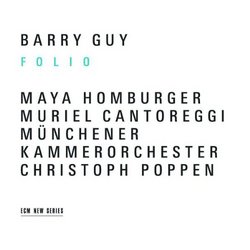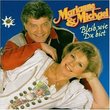| All Artists: Barry Guy, Christoph Poppen, Münchener Kammerorchester Title: Barry Guy: Folio Members Wishing: 2 Total Copies: 0 Label: ECM Records Original Release Date: 1/1/2006 Re-Release Date: 6/27/2006 Genres: Blues, Jazz, Pop, Classical Styles: Chamber Music, Historical Periods, Modern, 20th, & 21st Century Number of Discs: 1 SwapaCD Credits: 1 UPC: 028947630531 |
Search - Barry Guy, Christoph Poppen, Münchener Kammerorchester :: Barry Guy: Folio
 | Barry Guy, Christoph Poppen, Münchener Kammerorchester Barry Guy: Folio Genres: Blues, Jazz, Pop, Classical |
Larger Image |
CD DetailsSimilar CDs
|
CD ReviewsAn architecture for strings R. Hutchinson | a world ruled by fossil fuels and fossil minds | 07/18/2006 (5 out of 5 stars) "FOLIO is the latest composition for strings by double-bassist Barry Guy, and his second recording in the ECM New Series (following 2001's CEREMONY, duets with Maya Homburger). I first encountered Guy in his role as an improviser, playing with saxophonist Evan Parker and percussionist Paul Lytton, and in the realm of free improvisation, there is none better. I since learned that Guy is a man of many talents. He has performed baroque music for many years, including with Christopher Hogwood's Academy of Ancient Music, and has held the principal bass position with several orchestras. Guy founded and directed the London Jazz Composers' Orchestra until recently, contributing compositions for large ensembles, and now leads the Barry Guy New Orchestra, a slightly smaller ensemble that combines compositional architectures with improvisation. And FOLIO is the latest in a series of compositions for strings by Guy since the early 1980s, most notably AFTER THE RAIN (1992), recorded by the City of London Sinfonia for NMC.
FOLIO, commissioned by the BT Scottish Ensemble, has a unique structure. It begins with a short double-bass improvisation, followed by a 21-minute piece featuring the baroque violin of Maya Homburger (Guy's wife) and the Munchener Kammerorchester (Munich Chamber Orchestra), which is composed of 7 violins, 2 violas, 2 cellos, and 1 double-bass. Then comes a series of alternating sections, Folios 1 - 5 for orchestra, with improvised commentaries by either Guy on double-bass or Guy and Homburger duets in between, and Muriel Cantoreggi featured on violin in the Folios. FOLIO concludes with a duet between the two violins, and then a final section for the complete Kammerorchester. Like much of Guy's work, FOLIO is difficult to categorize. While much of the writing is resolutely modern, including passages of Xenakis-like glissandos, there are also lovely lyrical passages by the violins. The baroque elements lend a structure and a propulsion to the proceedings, and provide a familiar framework for the ear. The overall result is challenging and fascinating, and compels repeated listening. There are several sources for Guy's composition, including an architectural vision which came to him in a dream, a 1912 Russian drama by Nikolai Evreinov, and a 1553 composition by Diego Ortiz. This is typical -- the stunning recent Intakt recording ITHACA by his trio with Marilyn Crispell and Paul Lytton was also inspired by architecture. If you are interested in the best contemporary composition, don't miss this!" |



